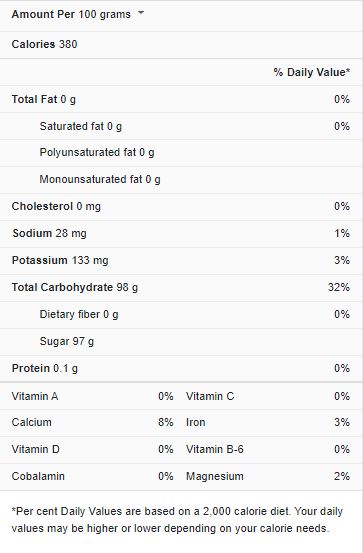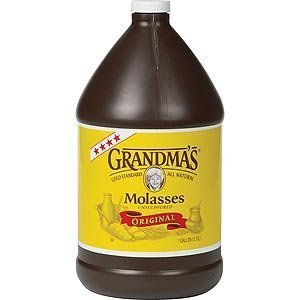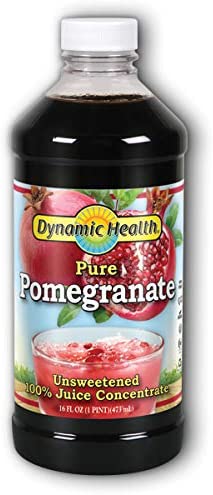Updated on September 8th, 2023
White sugar is one of those ingredients commonly featured in cooking and baking. And because it’s such a common ingredient, we tend to grow accustomed to using it. But when we happen to run out of white sugar, brown sugar works as an ideal substitute. But to get the best results, it’s essential to know the right ways to swap them. When you do, you’ll be able to substitute brown sugar in cakes, brownies, and even fudge. You’ll also find it helpful in making cookies and bread, as well as pumpkin and pecan pies. But first, let’s consider what sets brown sugar and white sugar apart.
Comparing Brown Sugar with White Sugar
In their primary forms, brown and white sugars are pretty much the same thing. Both are gotten from the squeezed and processed sugar cane juice, a grass-like crop that grows successfully in tropical regions. Some types of sugar can also be obtained from beets. But to make white sugar, the molasses yielded during refining the sugar by heating is removed. But for brown sugar, the reverse is the case.
When the sugarcane or beet plant juice is squeezed out and heated, it browns as the molasses content becomes pronounced. When brown sugar is made, the molasses is left in it after the impurities are removed. But nowadays, manufacturers have discovered a more straightforward method of making brown sugar. What they do is mix refined white sugar with molasses.
Both brown sugar and white sugar share a similar sweetness—the main difference between the two lies in their texture, moisture content, and color. White sugar is smoother and comes in fine granules, as you can observe from the regular table sugar you see daily. But with brown sugar, the sticky molasses content causes the granules to lump, so the sugar appears to have a heavier texture. And if the brown sugar is made from heating, it develops a toffee-like flavor, and you’ll notice a hint of this in your recipe when you use it.
Also, white sugar is drier than brown sugar since it doesn’t contain molasses. Brown sugar, however, is moist and sticky due to its molasses content. Brown sugar varies with the concentration of molasses in it. You get two varieties, light brown (which contains lesser molasses) and dark brown (higher in molasses). To further clarify, the darker the brown sugar, the more molasses it contains.
Brown Sugar Nutrition Facts

Substituting Brown Sugar for White Sugar
You can easily substitute brown sugar for white sugar at equal ratios in most recipes. But note that when you do, specific differences will pop up. Of course, this doesn’t ruin the recipe, but it’s necessary to understand how to use brown sugar to replace white sugar and in which recipes it works best.
In Bread and Pies
If you’re baking bread or making pie, brown sugar can easily replace white sugar in the dough. It would impart the same sweetness as white would, so the required taste will still be gotten. But note that brown sugar acts differently than white sugar in the dough. Unlike white sugar, brown sugar absorbs moisture, so when used in recipes like banana bread, you’ll end up with a moist baked good. Brown sugar will also affect the color of the bread or pie, and the higher its molasses content, the darker the bread would appear. But if you’re making a recipe with a darker hue, like pumpkin pie, this is hardly noticeable.
You’ll also notice a thicker texture and crust in pies that include melted butter when you use brown sugar instead of white. This condition is owed to two factors; lesser air pockets and gluten formation. White sugar has a neutral pH, so it stops gluten formation when it’s used in pies. But brown sugar encourages gluten formation, as it has acidic nature. As a result of this, gluten forms more, and if eggs are also present, the proteins coagulate.
In Cookies
When making cookies with white sugar, you’ll generally end up with a crisp, more rigid texture. This effect is because white sugar is drier, so cookies made with high amounts stay hard, thin, and crispy. But with brown sugar, the reverse is the case. In cookie dough, brown sugar keeps more moisture, and after baking, the cookies will absorb moisture from the surrounding air. The result of this process is a soft, plump, and chewy texture that’s still as delicious as you want it to be. Of course, the molasses content in brown sugar will darken the color of the cookies, but in most cases, this is hardly consequential.
Also, if the cookie dough contains baking soda, it would react to the acidic nature of brown sugar. This reaction causes carbon dioxide production, which puffs up the cookie dough and renders it softer. When you combine this condition with the highly absorbent properties of brown sugar, you realize that the finished goods will be chewy and soft.
Creaming Butter and Sugar
After hearing about how brown sugar retains more moisture in recipes than white sugar, you may be tempted to assume it would lift in creaming recipes. But it doesn’t, and here’s why. When you ship white sugar with butter to make a cream, more air pockets are created because white sugar had loose granules. This condition causes the dough mixed with such cream to attain a fluffier, lighter texture. But with brown sugar, the granules are tightly packed due to molasses in the mix. So, when whipped with butter to make a cream, lesser air pockets are trapped between the mixture, so dough baked with such come out thicker and denser.
Can You Use Brown Sugar in Cakes?
While brown sugar is welcome in many other baked recipes, it’s not so suitable in cakes. Many baked goods like pumpkin pies, chocolate chip cookies, and zucchini bread benefit significantly from the moistening capacity of brown sugar. And the extra puffiness and darker hue it gives may even enhance the final result of these foods. But making great cakes depend on making sure the dough is light, fluffy, and airy, and brown sugar can’t guarantee this due to its tightly packed granules. Plus, most cake recipes include baking soda- which reacts with brown sugar to thicken the dough. So, brown sugar isn’t an ideal substitute for white sugar in cakes.
Other White Sugar Substitutes
Maple Syrup or Honey
Both maple syrup and honey may add a darker color to your baked goods, but they still make excellent substitutes for white sugar. With both honey and maple syrup, use 3/4 cup to replace one cup of white sugar. Both are also made rich in nutrients but are sweeter, which is why you’re to use less of them.
Molasses
Since molasses is derived from sugar, you can use it as a substitute if that’s what you have. Molasses come in three varieties; light, dark and black strap. Light molasses is milder in flavor, while blackstrap is the most concentrated. Still, molasses aren’t as sweet as white sugar so when using them as a replacement, add 11/3 cup of it for a cup.
Fruit Concentrates
Many fruit juices come in a concentrated form that can be used as a replacement for white sugar. And the flavor and sweetness are determined by the fruit, so use your discretion. Also, watch out for those with added sugar and preservatives- they’re not acceptable substitutes for white sugar.
Frequently Asked Questions (FAQs)
Can you substitute brown sugar for white sugar in coffee?
Yes, you can. Both brown and white sugar is made of the same thing. And in coffee, the color effect of the molasses won’t be a problem.
Can you substitute brown sugar for white sugar in tea?
Brown sugar works well as a substitute for white sugar in tea. But to get the best results, use the organic varieties instead. They’re healthier and blend better with the taste.
Is brown sugar good for diabetics?
No, it isn’t. Brown sugar is simply white sugar mixed with molasses. So, it carries the same risks as every other type of sugar for those with diabetes.
Conclusion
While brown sugar may not have been your first choice, it’s still a fantastic substitute for white sugar in lots of recipes. Plus, it has a hint of caramel that pops in the presence of other ingredients like cinnamon and nutmeg. Once you master the best ways to use it in your baking, you’ll find it a handy alternative in times of need.




